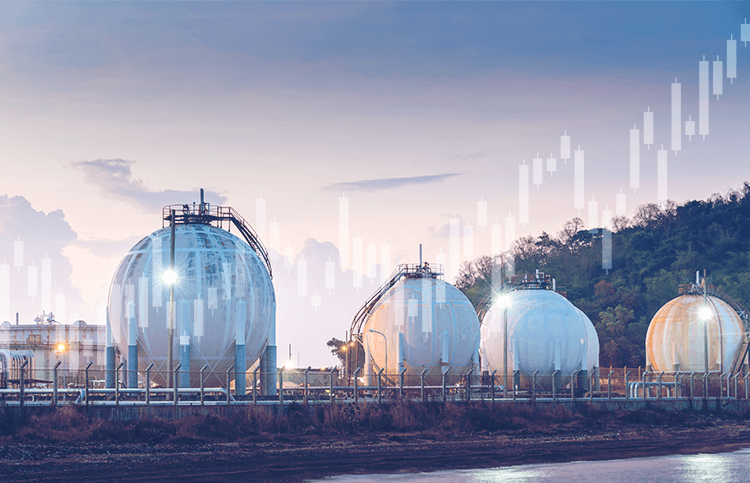The Connection Between Oil and Natural Gas
The Natural Gas industry is made up of different factions of companies, which serve different parts of the Natural Gas supply chain. Since Oil is an older industry, many of the companies in the Natural Gas ecosystem offer their services to both industries.
They consist of:
- Exploration Companies- Companies who survey land and determine locations that are likely to be rich in Natural Gas and Oil.
- Producers- Companies that will purchase mineral rights, drill wells, and extract either Natural Gas or Oil out of the ground.
- Natural Gas Processors- Clean the gas to remove water, heavy carbons, helium, and other chemicals to ensure that it meets Natural Gas’s purity standards before pumping it into a mid-stream line.
- Mid-stream and transmission transporters- Owners of the pipeline who charge Producers for the use of their transmission lines.
- Storage operators- Storage facilities lease out space to owners of the gas to store it before being sent to consumers.
- Local Distribution Companies- LDCs manage the delivery of gas from the storage facilities to end consumers. They too charge the gas owners for the use of their lines without owning the gas itself.
Throughout the process, Producers can transfer the Natural Gas/ Oil ownership to multiple parties through Futures contracts or other purchase commitments, even before the raw material is extracted.

Where are they found?
Natural Gas and Oil can both be found in underground deposits that were once active bodies of water. After drying millions of years ago, these dry beds left behind fossils, plants, and other debris which were covered with dirt and compressed for years. Combined with the heat of the earth, they became Oil or Natural Gas, often becoming trapped within the rock formations surrounding them.
How are they extracted?
In 2006, companies began drilling down a few kilometers into the ground then turned 90 degrees to drill horizontally into shale or limestone deposits where oil and gas were trapped. A mix of chemicals and water were then pumped into the rocks at high pressure, creating fractures in the rocks and releasing the oil and gas that were trapped within. The fracturing of rocks has led to this extraction technique being referred to as “fracking”.
What comes up the well is a mix of water, Oil, Natural Gas, and other elements that are trapped within the rocks and deposits.
This technological advancement encouraged an increase in Natural Gas extraction, distinguishing it as an independent commodity from Oil.
Do the prices of Oil and Natural Gas rise and fall together?
Understanding the fluctuations of Natural Gas in relation to Oil means recognizing the relationship between supply, demand, and capital allocation.
Traditionally, Natural Gas and Oil prices moved together but since 2006, when new drilling practices were introduced, Natural Gas has become recognized as a stand alone commodity. Industrial consumers, who used to rely mostly on coal or Oil, can now turn to Natural Gas as an energy source that can power factories and produce electricity.
For energy consumers who have the option to switch between Oil and Natural Gas as needed, they are more likely to select the commodity which is cheaper to operate with. For example, they may choose Oil in the winter when Natural Gas is more in demand for home heating, then switch to Natural Gas in the summer when demand drops.
While Oil and Natural Gas prices once rose and fell relatively in sync with one another, new drilling practices and consumer demands have increasingly shown traders that they are no longer connected. Traders, who now view these as two commodities which are independent of one another, can trade CFDs to take advantage of the inherent volatility of these energy-rich fuels.
Natural Gas’s commodity evolution
Natural Gas has gone from being an unwanted byproduct of oil wells to a highly sought-after commodity. Its use as a more eco-friendly alternative to Oil and its lower price has made it a favourite amongst energy suppliers and end-users for power plants, home heating, cooking, and even clothes drying.
Natural Gas has found a booming market amongst CFD traders who view it as an independent commodity with the same tradeability as other competitive commodities. As time goes on, Natural Gas and Oil are moving further apart, creating increased volatility and a new era of energy trading.
